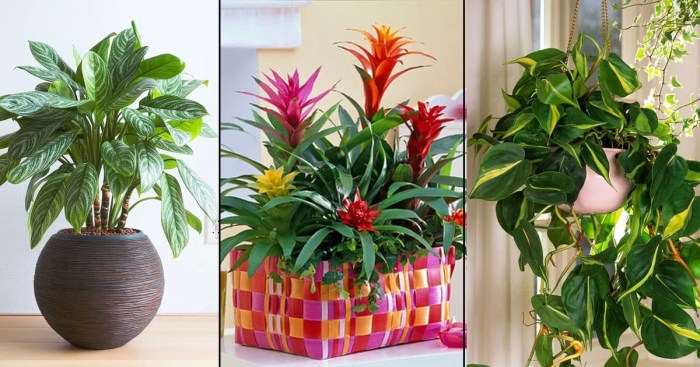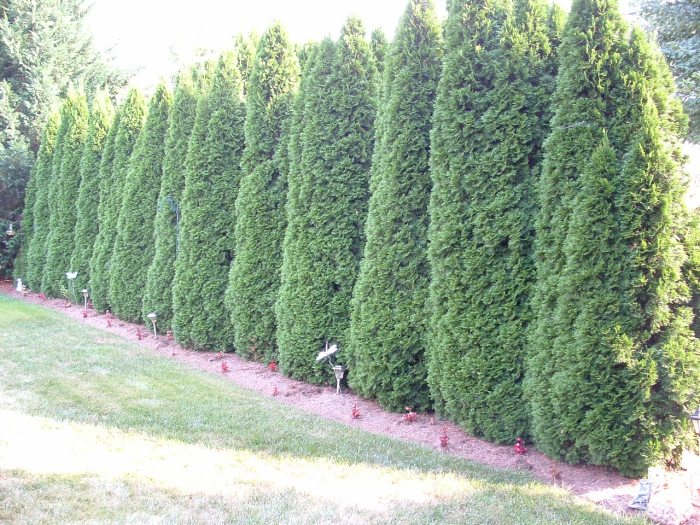Defining “Inexpensive”: Inexpensive Trees To Plant

Inexpensive trees to plant – The cost of trees varies significantly, making the term “inexpensive” relative. Several factors contribute to the final price, influencing what a budget-conscious buyer might consider affordable. Understanding these factors empowers consumers to make informed choices and secure the best value for their investment.Factors such as size, species, and sourcing significantly impact the cost of a tree. Larger trees, naturally, command higher prices due to the increased time and resources needed for cultivation.
Species also play a crucial role; rarer or more difficult-to-propagate varieties often carry premium prices. Finally, the sourcing of the tree—whether from a large commercial nursery, a smaller local operation, or a community program—also influences cost.
Tree Size and Species Influence on Price
The price of a tree is directly correlated to its size and species. A small sapling, typically under three feet tall, might range from $10 to $30, depending on the species. Larger trees, five to seven feet tall, can cost anywhere from $50 to $200 or more. Popular, easily grown species like maples or oaks often fall within the lower end of these ranges, while more unique or slower-growing varieties, such as certain types of flowering cherry trees or ornamental conifers, can be significantly more expensive.
For example, a young red oak sapling might cost around $25, while a mature Japanese maple could easily exceed $100. The size of the root ball also contributes to the cost; larger root balls require more labor and materials to handle and transport.
Finding Affordable Trees
Several avenues exist for locating affordable trees. Local nurseries often offer seasonal sales or discounts, particularly on less popular species or those that have experienced slow growth. Many communities run tree planting programs, sometimes offering subsidized or even free trees to residents as part of beautification or environmental initiatives. These programs frequently focus on native species that are well-suited to the local climate, providing additional value.
Checking with local conservation organizations or government agencies responsible for parks and recreation can also reveal opportunities for acquiring trees at reduced costs. Another option is to purchase bare-root trees, which lack a soil ball and are generally cheaper than container-grown trees. However, bare-root trees require more careful planting and have a higher risk of transplant shock.
Careful consideration of the tree’s suitability for your climate and planting site is vital, regardless of cost.
Species Selection
Choosing the right tree species is crucial for a successful and cost-effective planting project. Factors such as growth rate, mature size, sun and soil requirements, and hardiness zones must be considered to ensure the trees thrive in their intended location. Selecting fast-growing species can significantly reduce the time it takes to achieve the desired aesthetic or functional benefits of a mature tree.Fast-growing, inexpensive trees offer a practical solution for landscaping projects aiming for quick results without breaking the bank.
This section details five species suitable for various climates, providing information on their mature size, growth rate, sun and soil preferences. These details will assist in making informed decisions based on specific site conditions.
Fast-Growing Tree Species for Diverse Climates
Five fast-growing, inexpensive tree species, suitable for various climates, are presented below. Their mature sizes, growth rates, sun and soil requirements are discussed to aid in selecting the most appropriate species for a particular planting location.
| Species | Growth Rate | Sun Requirement | Soil Requirement |
|---|---|---|---|
| Leyland Cypress (x Cupressocyparis leylandii) | Very Fast (3-4 feet per year) | Full sun to partial shade | Well-drained, moist soil; tolerates a range of soil types |
| Silver Maple (Acer saccharinum) | Fast (2-3 feet per year) | Full sun | Moist, well-drained soil; tolerates various soil types |
| Willow (Salix species, various) | Very Fast (several feet per year) | Full sun to partial shade | Moist to wet soil; tolerates poorly drained conditions |
| Poplar (Populus species, various) | Very Fast (several feet per year) | Full sun | Moist, well-drained soil; tolerates a range of soil types |
Fast-growing Eucalyptus (Eucalyptus species, various)
|
Very Fast (several feet per year) | Full sun | Well-drained soil; drought-tolerant once established |
Long-Term Considerations
Planting inexpensive trees offers significant long-term benefits, extending beyond the initial cost savings to encompass substantial environmental advantages and increased property value. While the upfront investment is lower, the returns in ecological health and financial appreciation can be substantial over the lifetime of the trees. Careful planning and ongoing maintenance are crucial to realizing these benefits.The environmental impact of a thriving, diverse tree population is undeniable.
The pursuit of affordable landscaping often leads to discussions about inexpensive trees to plant, a crucial aspect of accessible green spaces. However, the perceived simplicity can be deceptive; even seemingly straightforward options require careful consideration, such as understanding the process detailed in this guide on how to plant palm tree , a popular yet sometimes problematic choice due to its water needs.
Ultimately, the cost-effectiveness of any tree hinges on proper planting and long-term maintenance, factors often overlooked in the initial enthusiasm for inexpensive options.
Trees absorb carbon dioxide, a major greenhouse gas, mitigating climate change. They improve air quality by filtering pollutants, reduce stormwater runoff, and provide habitat for wildlife, enhancing biodiversity in urban and rural landscapes. For property owners, mature trees significantly increase curb appeal and property values, making them a sound long-term investment. Studies consistently show that homes with mature, well-maintained landscaping, including trees, command higher sale prices than comparable properties lacking such features.
A mature oak tree, for instance, can add thousands of dollars to a home’s value.
Potential Challenges and Preventative Measures
Inexpensive trees, while offering cost-effectiveness, may be more susceptible to certain diseases and pests than more expensive, established varieties. Regular monitoring is crucial for early detection and intervention. Common challenges include fungal diseases like anthracnose and leaf spot, as well as insect infestations like aphids and borers. Preventative measures include selecting disease-resistant species appropriate for the local climate and soil conditions.
Proper watering and fertilization practices also bolster tree health and resilience. Pruning to improve air circulation and sunlight penetration can minimize fungal growth. In case of infestation, prompt treatment with appropriate insecticides or fungicides, following label instructions carefully, is necessary. Consulting with a certified arborist can provide expert guidance on disease and pest management.
Resources for Ongoing Tree Care and Maintenance
Accessing reliable resources for ongoing tree care is vital for maximizing the long-term benefits of your investment. Local agricultural extension offices often offer free or low-cost consultations and workshops on tree care specific to your region. Numerous online resources, including university websites and arborist associations, provide detailed information on tree species, pest identification, and best practices for pruning, fertilization, and disease management.
Many municipalities also offer tree planting and maintenance programs, providing valuable support and resources to homeowners. Engaging a professional arborist for periodic inspections and advice can help identify potential problems early and prevent costly repairs or tree loss in the future. These resources collectively provide a comprehensive support system for ensuring the long-term health and vitality of your inexpensive trees.
Visual Representation

A picture is worth a thousand words, especially when it comes to successfully planting a tree. Understanding the proper planting technique is crucial for ensuring the sapling’s survival and healthy growth. Visual aids, like the one described below, can significantly improve understanding and success rates.Proper planting technique involves several key steps, all clearly illustrated in a helpful diagram.
The illustration shows a hole significantly larger than the root ball of the sapling, allowing ample space for root expansion. The soil removed from the hole is then amended with compost or other organic matter to improve drainage and nutrient content. The sapling is carefully placed in the hole, ensuring the root crown sits level with the surrounding ground.
The amended soil is then gently backfilled, avoiding air pockets, and finally, the area around the sapling is thoroughly watered to settle the soil and promote root contact.
Sapling Planting Technique Illustration, Inexpensive trees to plant
The illustration depicts a young tree, approximately 1-2 feet tall, with a well-developed root system. The root ball, a compacted mass of roots and soil, is clearly visible. A large hole, at least twice the diameter of the root ball and just as deep, has been dug. Loose, dark-colored soil amended with compost is piled beside the hole.
The sapling is shown positioned carefully within the hole, ensuring that the top of the root ball is level with the surrounding ground. The amended soil is then shown being gently filled around the roots, avoiding compaction. Finally, the illustration depicts a generous watering, with water soaking into the soil around the newly planted sapling.
Growth Rate Comparison: Silver Maple vs. Red Oak
To illustrate the differences in growth rates, imagine two side-by-side illustrations. One shows a Silver Maple (Acer saccharinum*) and the other a Red Oak (*Quercus rubra*). Both saplings are planted at the same time under similar conditions. After five years, the illustration of the Silver Maple shows a significantly taller and wider tree than the Red Oak. The Silver Maple’s rapid growth is visually apparent, displaying a taller trunk and a broader canopy.
In contrast, the Red Oak, while showing growth, remains noticeably smaller, reflecting its slower growth rate. This difference in growth is readily apparent in the illustrations, emphasizing the varied growth characteristics of different tree species. The Silver Maple, known for its fast growth, could potentially reach 20-30 feet in height within those five years, while the Red Oak might only reach 10-15 feet.
These are approximate figures, varying based on environmental factors, but illustrate the significant difference in their growth trajectories.
Q&A
How long does it take for an inexpensive tree to reach maturity?
Maturity varies greatly by species. Fast-growing varieties might reach significant size within 5-10 years, while slower-growing species may take 20 years or more.
What are the common pests and diseases affecting inexpensive trees?
This depends heavily on the species and local climate. Common issues include fungal diseases, insect infestations (aphids, borers), and root rot. Regular inspection and preventative measures are crucial.
Can I plant an inexpensive tree in a container and then transplant it later?
Yes, container-grown trees are easier to transplant than bare-root trees, but ensure the container is appropriately sized to prevent root-bound issues.
Where can I find information on local tree giveaways or exchanges?
Check with your local municipality, environmental organizations, and community gardening groups. Many offer free or discounted trees through various programs.

